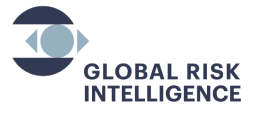Introduction
This paper is the second in a series analyzing how states deploy economic instruments to expand strategic influence across sensitive regions and sectors. Following our assessment of China’s infrastructure footprint in the Balkans, this paper examines Canada’s engagement with Kazakhstan’s uranium industry, an arena where energy security, dual-use technology and geopolitical rivalry intersect.
Kazakhstan is the world’s leading producer of natural uranium, supplying over 40 percent of global output. Its state-controlled champion, Kazatomprom, anchors joint ventures with both Western and non-Western partners, positioning the country at the center of the global nuclear fuel supply chain. Canada’s Cameco Corporation is among the most prominent Western investors, holding a 40 percent stake in the Inkai joint venture.
Yet, operating in Kazakhstan’s uranium sector entails layered risks: regulatory volatility, legal unpredictability, ownership opacity, and geopolitical exposure. Temporary suspensions of operations, high-profile arbitration disputes, and the transfer of strategic assets to Chinese buyers illustrate the vulnerability of foreign stakeholders. For Canadian actors, the sector represents both a vital diversification pathway away from Russian-controlled supply routes and a field of complex compliance challenges.
Strategic and Regulatory Landscape
Uranium is both a commodity and a strategic asset, central to civilian nuclear energy but also sensitive to non-proliferation concerns. Kazakhstan’s dominance in uranium production grants its structural leverage in global energy and security debates.
The sector is governed by Kazakhstan’s Subsoil and Subsoil Use Code, which mandates state ownership of mineral resources. Foreign investors require government-approved contracts, enforced by the Ministry of Energy and environmental regulators. Enforcement practices are often centralized, occasionally inconsistent, and subject to political discretion.
Joint ventures with Kazatomprom remain the dominant entry point for foreign firms. While Cameco, China General Nuclear (CGN), and formerly Uranium One (Russia) have secured stakes, Kazatomprom retains majority control. Russia’s divestment of certain assets to Chinese buyers marks a shift in influence, raising concerns about long-term market access, supply security, and transparency in ownership structures.
Kazakhstan’s Uranium Sector and Market Dynamics
- Kazatomprom: Oversees mining, processing, and exports; majority state-owned despite partial public listing.
- Extraction Techniques: ISR (in-situ recovery) methods dominate, offering cost efficiency but raising environmental risks, particularly groundwater contamination.
- Regulatory Precedents: The 2025 Inkai suspension due to delayed filings demonstrates regulatory leverage over operational continuity.
- Legal Disputes: Kazakhstan’s success in overturning a USD 54.5 million arbitration award against a Canadian junior firm highlights sovereign resilience in dispute resolution.
- Geopolitical Realignment: Chinese acquisitions of stakes once held by Russian entities consolidate Beijing’s role in Kazakhstan’s uranium chain, potentially constraining Western access.
Canada’s Position and Strategic Intent
Canada’s uranium engagement reflects a dual imperative: commercial opportunity and geopolitical necessity. Cameco’s longstanding presence in Kazakhstan provides access to low-cost production and positions Canada as a counterweight to Russian and Chinese influence in the nuclear fuel market.
However, the relationship is strained by:
- Licensing and regulatory delays.
- Legal unpredictability in arbitration outcomes.
- Kazakhstan’s growing preference for maintaining sovereign control.
- China’s expanded stakeholding at the expense of Russian exits.
Strategically, Canada’s involvement supports Western supply diversification and aligns with NATO and EU interests in reducing dependency on Russia. Yet, Kazakhstan’s balancing strategy means even established partners face constraints.
Compliance and Due Diligence Challenges
Licensing and Contractual Risk
- Subsoil contracts are revocable or suspend able by state authorities.
- Obligations include local content, environmental safeguards, and technical standards.
- Enforcement may be inconsistent, creating operational fragility.
- Red Flag: Sudden regulatory suspensions over procedural non-compliance.
Legal Disputes and Enforcement Risk
- Kazakhstan has demonstrated ability to resist arbitration enforcement.
- Legal remedies for foreign firms may be constrained by sovereign immunity.
- Red Flag: Contracts with weak arbitration clauses or reliance on external tribunals.
Ownership and Transparency Risk
- Beneficial ownership structures in joint ventures may involve opaque networks.
- Transfers of Russian stakes to Chinese buyers occurred with limited disclosure.
- Red Flag: Unknown shareholders, politically exposed persons (PEPs), or front companies in JV structures.
Sanctions, Export Controls, and ESG Exposure
- Some uranium shipments transit through Russian infrastructure, raising sanctions risks.
- Export controls tied to nuclear non-proliferation impose compliance burdens.
- ISR techniques carry environmental risks that can trigger ESG scrutiny.
- Red Flag: Transactions involving dual-use goods, high-risk jurisdictions, or unverified supply-chain intermediaries.
Risk Mitigation Measures
Enhanced Due Diligence (EDD)
- Verification of beneficial ownership, supply-chain intermediaries, and subcontractors.
- Ongoing compliance monitoring with a focus on politically exposed entities.
Contractual Structuring
- Robust arbitration clauses, ideally referencing neutral jurisdictions.
- Contingency planning for operational suspensions or regulatory delays.
Supply Chain Security
- Mapping uranium transit routes to identify Russian-linked chokepoints.
- Developing redundancy in transport and processing channels outside Russian influence.
Regulatory Engagement
- Proactive compliance with Kazakhstan’s subsoil code, environmental obligations, and reporting requirements.
- Regular dialogue with Kazakh authorities to anticipate policy shifts.
ESG and Environmental Risk Management
- Independent groundwater monitoring for ISR operations.
- Transparent reporting aligned with international ESG standards.
Conclusion
Kazakhstan’s uranium industry represents both a strategic opportunity and a compliance challenge for Canada. Access to the world’s leading uranium producer strengthens Canadian and Western efforts to diversify away from Russian-controlled supply chains. Yet, the sector is characterized by regulatory unpredictability, opaque ownership transitions, and the growing influence of Chinese firms.
For compliance officers, investors, and policymakers, the Kazakh uranium sector requires sustained due diligence across licensing, legal, and geopolitical dimensions. The convergence of resource nationalism, great power competition, and ESG scrutiny elevates uranium from a commodity market to a domain of strategic contestation.
In this environment, only those actors that integrate robust compliance systems, supply-chain resilience planning, and proactive regulatory engagement will be positioned to mitigate risks and sustain long-term access. For Canada, the stakes are not only commercial but also geopolitical, shaping its ability to remain a credible player in the global nuclear fuel market.

